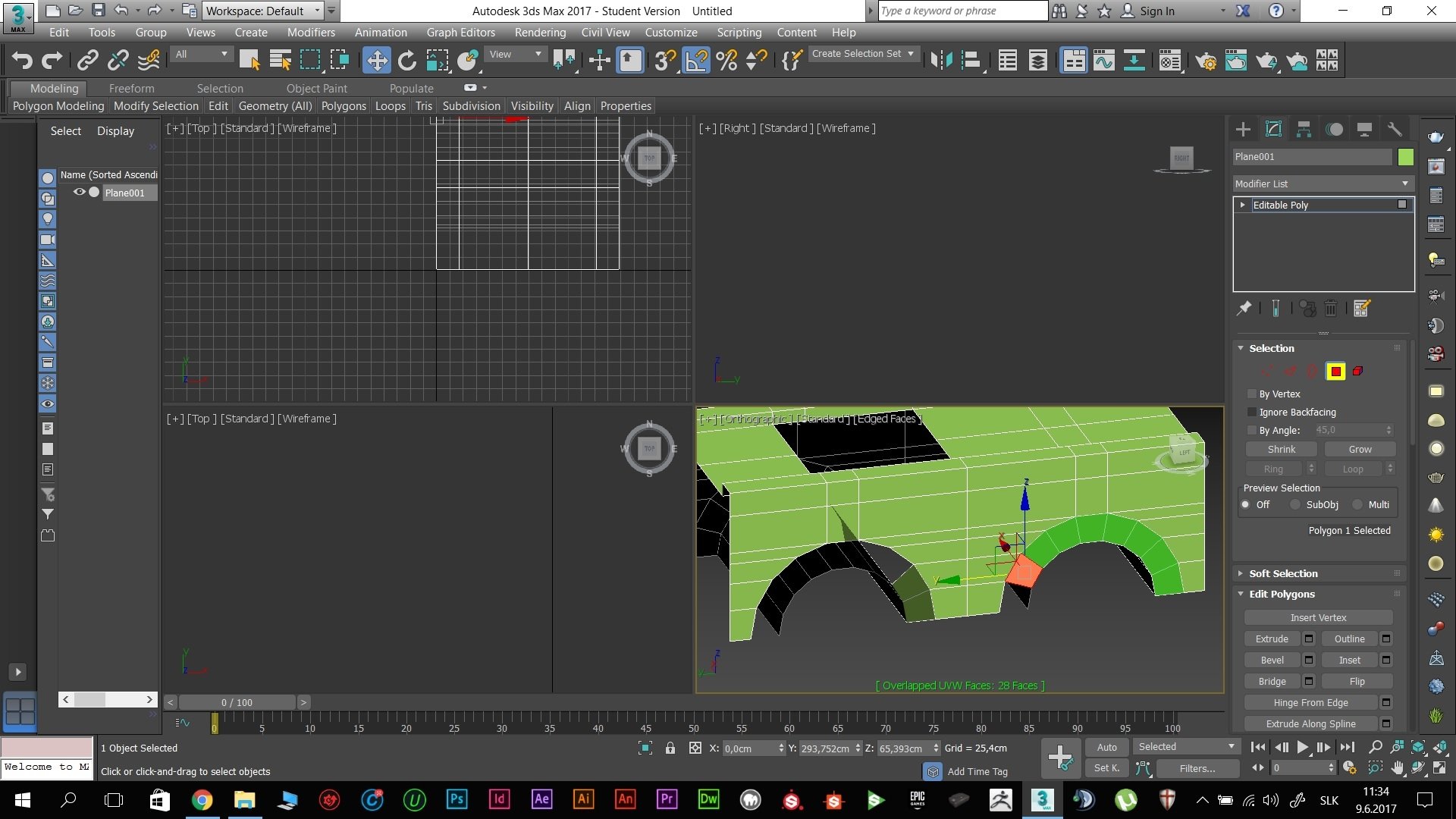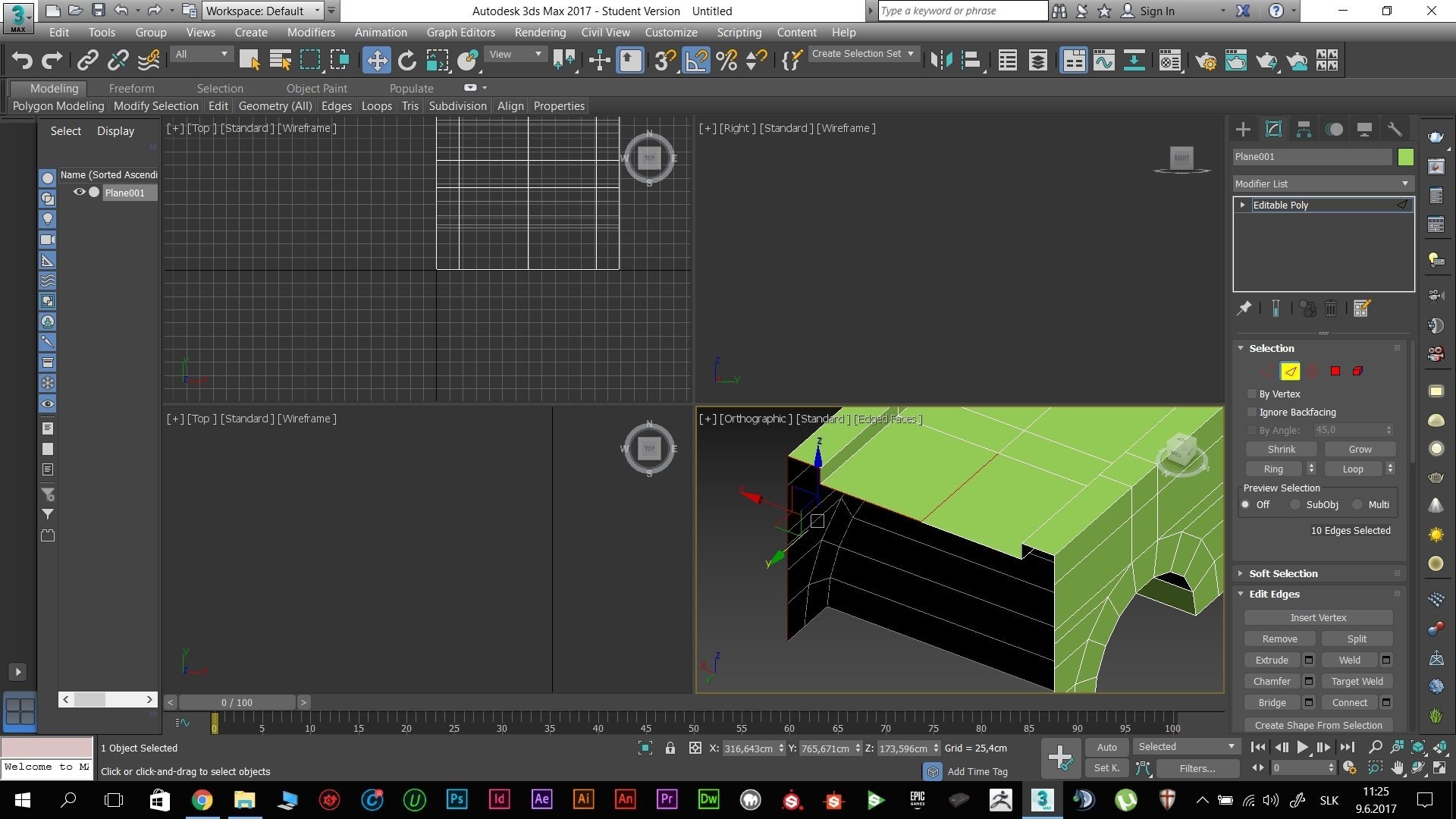The BRAWL² Tournament Challenge has been announced!
It starts May 12, and ends Oct 17. Let's see what you got!
https://polycount.com/discussion/237047/the-brawl²-tournament
It starts May 12, and ends Oct 17. Let's see what you got!
https://polycount.com/discussion/237047/the-brawl²-tournament
[3DS Max] Edges, overlapping faces, multiple edges and extrusion, x-view
Every single time I start modeling, at some point I notice issues with edges, wrong loops, overlapping faces in x-view. Now these problems creates another ones and the best way to get rid of this would be to prevent this. But how ?

This is x-view, showing overlapping UVW faces. What is the deal here ?

Often, I end up at point, where I am unable to select whole edge by double clicking it. Using ctrl+click does not solve the problem. Even after extruding, faces behave as two. Even if they are welded ! Now I do select whole model and vertices, welding all of them with 0,01 tolerance. Therefore there shouldn't be any issues. But as you can see, there are.
Now that leads to double edges issue. If I weld vertices after each extrusion, how do double faces happen to be there ? Also, double faces are only visible using x - view. Its pretty much not possible to tell them apart and delete the right ones.
And finally, what is the impact of this on games engines or rendering ? As long as faces are not overlapping everything should be fine, shouldn't it ?

This is x-view, showing overlapping UVW faces. What is the deal here ?

Often, I end up at point, where I am unable to select whole edge by double clicking it. Using ctrl+click does not solve the problem. Even after extruding, faces behave as two. Even if they are welded ! Now I do select whole model and vertices, welding all of them with 0,01 tolerance. Therefore there shouldn't be any issues. But as you can see, there are.
Now that leads to double edges issue. If I weld vertices after each extrusion, how do double faces happen to be there ? Also, double faces are only visible using x - view. Its pretty much not possible to tell them apart and delete the right ones.
And finally, what is the impact of this on games engines or rendering ? As long as faces are not overlapping everything should be fine, shouldn't it ?
Replies
The reason xview is showing overlapping uvw is because your mesh hasn't been unwrapped yet. You can see this for yourself if you add an unwrap uvw modifier. The uvs will be a jumbled mess.
Do some very basic modeling excercises on a plane or a box to get used to what the tools do.
I understand that 2 vertices create edge, 4 edges create face. And and everything should be 4 - quads if possible. And I understand smoothing. If you weld vertices, they become one. (theoretically if you weld face, you get edge, although it doesn't work that way) . I also know that extrusion creates new vertices at same position, but duplicates them. However, welding should do the trick.
I also know about retypology, how to affect smoothing, smoothing groups...
What exactly should I try or what should I watch ?
https://streamable.com/hu38t
You should be using shift+drag to create new edges for this purpose. As I also said above, this is a case of learning the basic functions of the tools.
As for OP, I think you must be coming from another modeling package, as peran observed, where extrude edge behaves as you were expecting.
OP - as per perna's advice, here's a copy/paste from the mysterious and archaic Max official documentation:
Cloning Sub-Object Geometry
Using Shift+transform with a selection of vertices or faces displays the Clone Part Of Mesh dialog. This lets you choose whether to clone to a separate object or an element. Click the desired option, optionally giving the cloned object a new name, then click OK.
Now this doesn't specifically mention edge extrusion but 3d modelling is all about experimentation. If you had known about cloning sub-objects you would surely have discovered the edge extrusion function. This is also an important technique when used with border sub-object move/scale/rotate.
What about parts that were closed with cap modifier ? Should I just use cut tool to connect remaining vertices ? ( I did search even Max documentation online this time, just no mention of t - vertices)
In your image with the highlighted red edgeloop, it terminates and results in a triangular quad. What exactly are you asking us? And what is it you're intending to do with that edgeloop?
Knowing the terminology is one thing. The important thing is putting it to use. There's no answer to the last question you asked. You as the modeler need to judge this yourself. If it looks good, it is good. Learn about topology. Understanding that is the foundation.